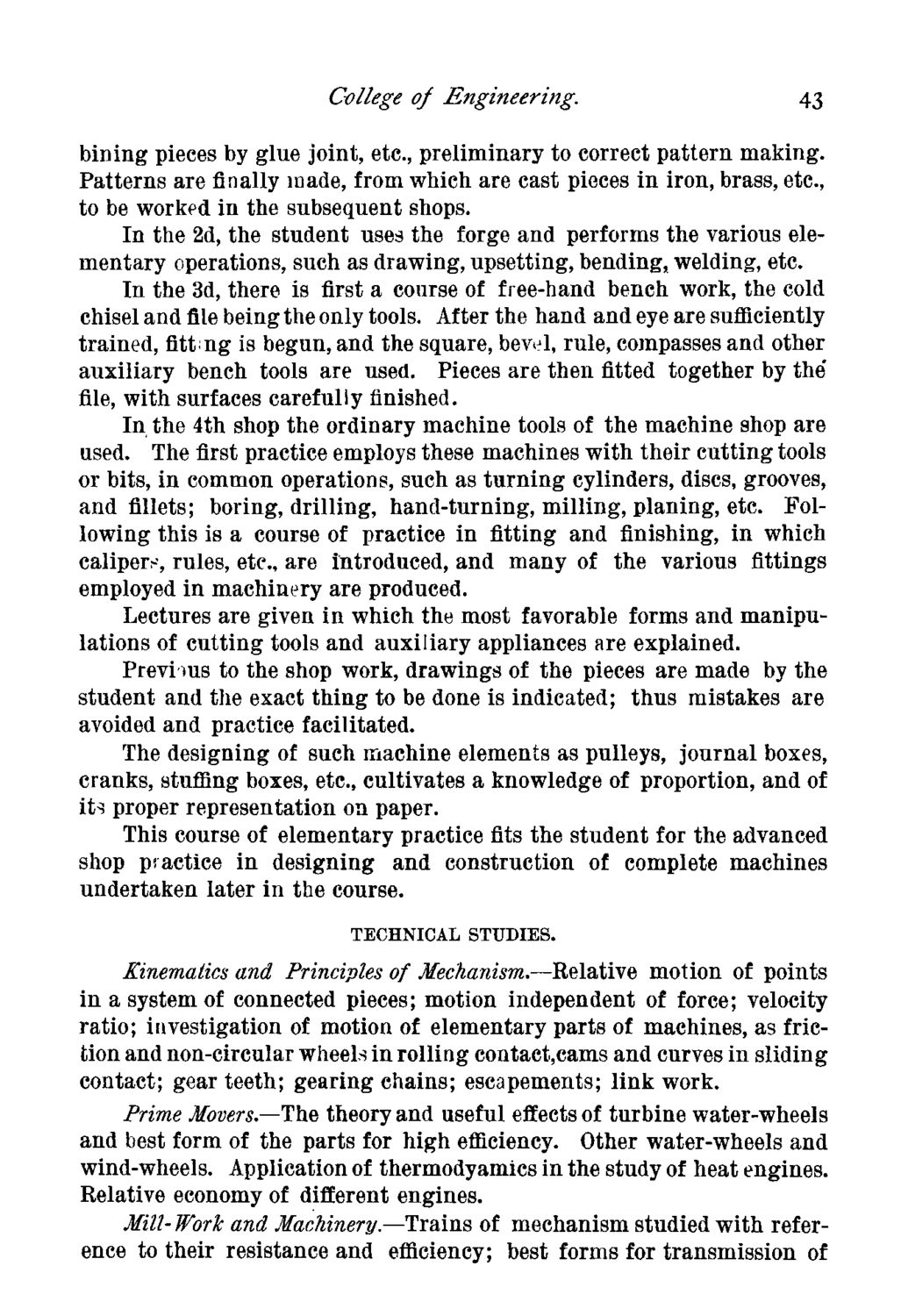| |
| |
Caption: Course Catalog - 1883-1884
This is a reduced-resolution page image for fast online browsing.

EXTRACTED TEXT FROM PAGE:
College of Engineering. 43 bin ing pieces by glue joint, etc., preliminary to correct pattern making. Patterns are finally made, from which are cast pieces in iron, brass, etc., to be worked in the subsequent shops. In the 2d, the student uses the forge and performs the various elementary operations, such as drawing, upsetting, bending, welding, etc. In the 3d, there is first a course of free-hand bench work, the cold chisel and file being the only tools. After the hand and eye are sufficiently trained, fitting is begun, and the square, bevel, rule, compasses and other auxiliary bench tools are used. Pieces are then fitted together by the' file, with surfaces carefully finished. In the 4th shop the ordinary machine tools of the machine shop are used. The first practice employs these machines with their cutting tools or bits, in common operations, such as turning cylinders, discs, grooves, and fillets; boring, drilling, hand-turning, milling, planing, etc. Following this is a course of practice in fitting and finishing, in which calipers, rules, etc., are introduced, and many of the various fittings employed in machinery are produced. Lectures are given in which the most favorable forms and manipulations of cutting tools and auxiliary appliances are explained. Previ ms to the shop work, drawings of the pieces are made by the student and the exact thing to be done is indicated; thus mistakes are avoided and practice facilitated. The designing of such machine elements as pulleys, journal boxes, cranks, stuffing boxes, etc., cultivates a knowledge of proportion, and of its proper representation on paper. This course of elementary practice fits the student for the advanced shop practice in designing and construction of complete machines undertaken later in the course. TECHNICAL STUDIES. Kinematics and Principles of Mechanism.—Relative motion of points in a system of connected pieces; motion independent of force; velocity ratio; investigation of motion of elementary parts of machines, as friction and non-circular wheels in rolling contact,cams and curves in sliding contact; gear teeth; gearing chains; escapements; link work. Prime Movers.—The theory and useful effects of turbine water-wheels and best form of the parts for high efficiency. Other water-wheels and wind-wheels. Application of thermodyamics in the study of heat engines. Relative economy of different engines. Mill- Work and Machinery—Trams of mechanism studied with reference to their resistance and efficiency; best forms for transmission of
| |